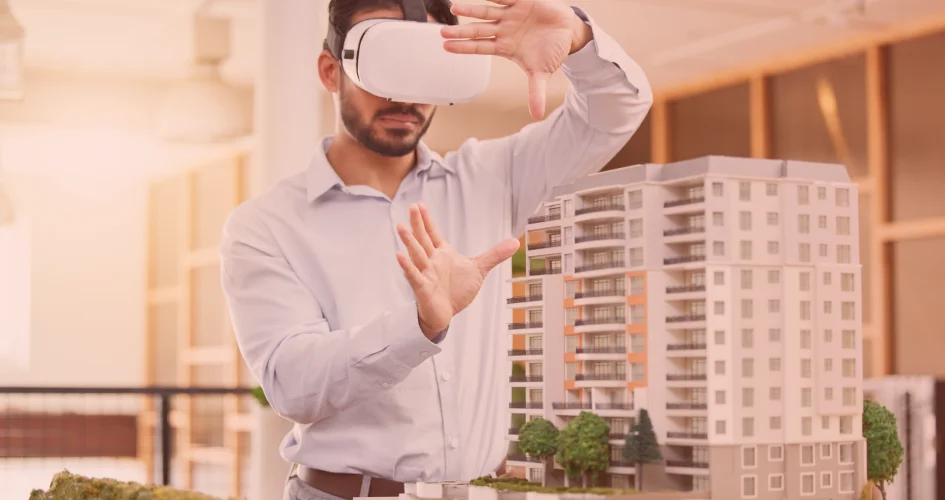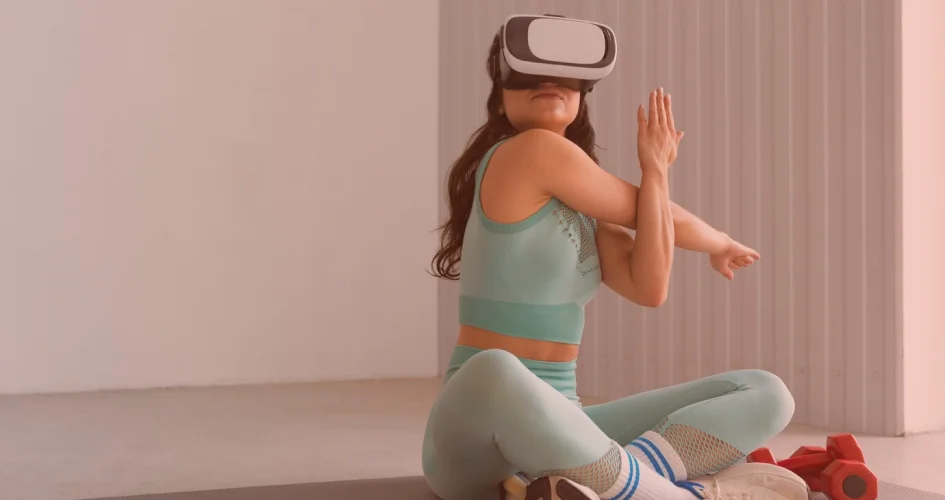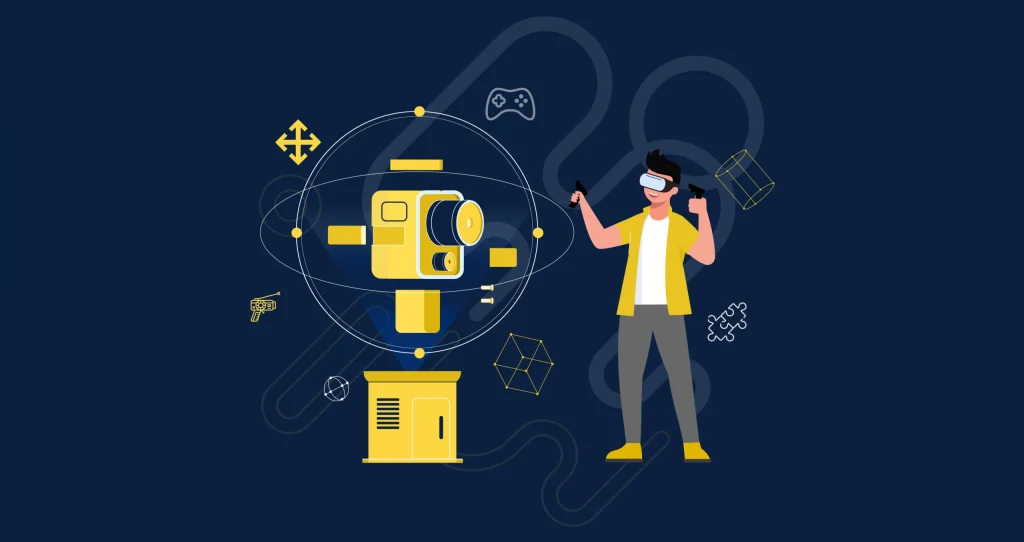AR has proven to be an arrowhead that demystifies the theoretical processes in healthcare education.
The advent of AR in healthcare has laid the foundation for numerous solutions in curing PTSD, surgical visualization, relaxing patients, and medical presentations.
This is one solution any entrepreneur or startup founder can leverage for guaranteed quick growth in their healthcare business.
You only need a brilliant idea to get started and to partner with a reliable AR app development services provider.
Willing to learn more about Augmented Reality in Healthcare? Continue reading for the following:
- What is AR in Healthcare?
- Use Cases of AR in Healthcare
- Tips to maximize the benefits of AR in healthcare
- And more!
Let’s elucidate on the crux of the article:
What is AR in Healthcare?
Augmented Reality in healthcare entails using technology to superimpose digital graphics in the physical world.
The aim here is usually to illustrate internal or external body parts to teach students, treat psychological trauma, and re-educate experts in the field.
Use Cases of AR in Healthcare
The use cases of Augmented Reality in healthcare are numerous.
This phenomenon is largely due to its top-notch immersive capabilities and ability to replace the abstract teaching method in the healthcare industry.
Although the use cases are numerous, we’ll restrict our discussion to the most important ones. Let’s dig in:
Use Case 1: Interactive and Immersive Medical Training
Statistic from the Association of American Medical Colleges suggests that the US will report a shortage of over 120,000 physicians within the next ten years. This shows that educational institutions have more medical experts.
An impediment to this is the complexities of medical education, which make most prospects unwilling to become physicians.
However, AR in education makes learning easy as it guarantees an immersive and interactive experience. An example of an AR tool doing this is FlexAR.
FlexAR is an Augmented Reality application for anatomy education. FlexAR helps medical students virtually visualize different human body parts.
The app also helps them look for anomalies and how body parts interact with each other.
It gives them 3D visual information without needing physical cadavers and study materials.
Use Case 2: For Introducing New Therapies to Medical Experts
Pharmaceuticals and life science companies use Augmented Reality to educate healthcare professionals on the latest therapeutic techniques.
These companies create Augmented Reality illustrations showing how their drugs can cure diseases as they progress through different stages.
The application of Augmented Reality ensures proper collaboration between Research Doctors and Pharmacists.
For example, AR-based visualization tools enable the study of the effects of different therapeutic techniques on genetics.
Use Case 3: Virtualization Surgeries
Augmented Reality aids virtualization surgeries by superimposing digital information on a patient’s body.
This act allows surgeons to view the patient’s internal organs and plan surgical procedures more accurately.
Also, the immersive images of the patient’s internal organs can help the surgeon locate and access anatomical structures, reduce complications, and improve their success rates.
Use Case 4: Enhances Symptom Diagnosis
Augmented Reality enhances symptom diagnosis by providing medical experts with an accurate view of the patient’s illness.
Here are ways AR improves symptom diagnosis:
- Real-time Data Offering: AR provides physicians with real-time patient symptoms information, aiding prompt diagnosis.
For example, a physician can use Augmented Reality to view a patient’s internal organs and disease progression. - Better Communication: It also facilitates better communication between patient and physician during diagnosis, as they can explain the diagnosis interactively and visually.
Use Case 5: Aids Proactive Selfcare
Augmented Reality provides interactive and immersive experiences for individuals to learn about their health.
For example, an individual with a skin condition can use AR to learn about their skin and how to treat it.
They can also track their healing process and get healthcare recommendations.
Additionally, you can also use AR for guidance on exercises by superimposing virtual trainers in a real-world environment to guide individuals through the workout process.
This is particularly useful for in-house training. Individuals with mobility issues can also try out this method.
AR helps in mental health care. By providing an immersive virtual environment, AR helps to reduce anxiety and stress. You can also use it as a tool for mindfulness and meditation.
Use Case 6: Medical Imaging
When used with ML algorithms, AR can turn CT scan results into complex 3D brain images. The surgeon can display this 3D image to serve as a guide.
Hence, AR aids medical CT scan image interpretation to better understand the ailment and to provide a groundwork for surgical processes.
Similarly, the surgeon can project tumor and artery structures onto an operating field to accurately view underlying tissues, cancers, and organs.
An example of an AR platform doing this is Immersive Touch. The platform provides the surgeons with a 3-D x-ray image of different body parts and shows the progression of activity during the medical operation. It also enables them to navigate internal organs better.
Use Case 7: Visualizing the Vein System
The body’s vein system refers to the complex network of veins that carry blood to different parts of your body. Due to the number of veins and their interwovenness, they’re very difficult to meander. This makes collecting blood samples difficult.
However, AR hand-held scanners allow healthcare professionals to view the underlying area of the skin with a vein.
An example of a solution that helps to visualize the vein system is AccuVein’s vein finder.
This hand-held device has a digital laser, scanner, and an AR-backed processing system.
The projection makes it easier for medical experts to draw blood, make IV lines, and plan surgical processes.
Use Case 8: Remote Consultation
Augmented Reality aids remote consultation by providing medical professionals a medium to visualize and interact with patients without being physically present.
While video conferencing offers the same thing, AR makes the interaction more immersive and engaging.
Here are some ways AR aids remote consultation:
- Digital Annotation and Highlighting: You can use AR to highlight specific interests during consultation.
This provides an area of interest in real-time, giving both patients and medical experts visual cues.
This is particularly beneficial in helping patients to understand medical instructions better. - Remote Monitoring: You can use Augmented Reality to remotely monitor patients’ conditions over time.
For example, wearable devices let you track real-time movement patterns and vital signs. - Collaborative Diagnosis: Medical experts in varying locations can work collaboratively with the aid of AR technology.
For example, specialists treating a patient can collaborative partner with others in a highly engaging and immersive manner.
Here, AR technology virtually superimposes an image of the patient in the physical location of remote specialists, allowing them to collaboratively view patients.
Now that we’ve educated you on use cases of Augmented Reality in healthcare, we’re pretty sure you’re inspired to create your AR product.
For a successful product launch, we’ll encourage you to adhere to the following tips for AR in healthcare.
Tips to Maximize the Benefits of AR in Healthcare
AR in healthcare offers a range of benefits. To maximize them and ensure you create the right technology, we’ll advise that you do the following:
#1. Choose the Right AR Tech
There are multitudes of AR tech solutions out there, some of which we just discussed.
As with other technologies, each AR product has distinct strengths and weaknesses.
Opting for the right technology is imperative to appropriately benefit from an Augmented Reality product.
To choose the ideal solution, consider cost, ease of use, and accuracy.
#2. Train Patients and Professionals
AR is still relatively new, and the adoption rate is low. Thus, you should train healthcare experts and patients before introducing an AR solution.
Don’t just train on how to operate the device, but also integrate AR into workflows.
#3. Ensure Patient Safety
Augmented Reality conveys data and receives data from several supporting technologies.
As such, it’s a surface point for cyberattacks.
To adhere to the stipulations of compliance laws, you should take every necessary step toward protecting data and patient privacy.
For one, implement robust data security protocols such as firewalls, anti-virus protection, etc.
#4. Be Patient-Centric
The primary reason for using AR should be to ensure top-notch patient experience through proper healthcare.
Thus, every piece of AR device you create should guarantee better patient health.
Inspired to start your augmented reality app idea? Before you get started.
You’ll have to first figure out your AR app development cost.
Then reach out to an AR developer.
Let’s succinctly discuss this.
Let Intelivita Help You Get Started!
Globally, AR in healthcare is projected to grow at a CAGR of 27.2% from 2021 to 2028.
This growth rate shows that there’s a massive prospect in the section.
As such, the best time to own an Augmented Reality product is now.
The success of your AR product depends on the brilliance of your idea, and the expertise of your AR development partner.
As such, it’s best to opt for one with verifiable experience creating complex AR solutions.
At Intelivita, we have a near-decade experience creating Augment Reality for healthcare. Doubt our expertise?
Go through our past projects’ case studies, and page on the clutch for reviews.
Contact us for more information about our AR development offering.





